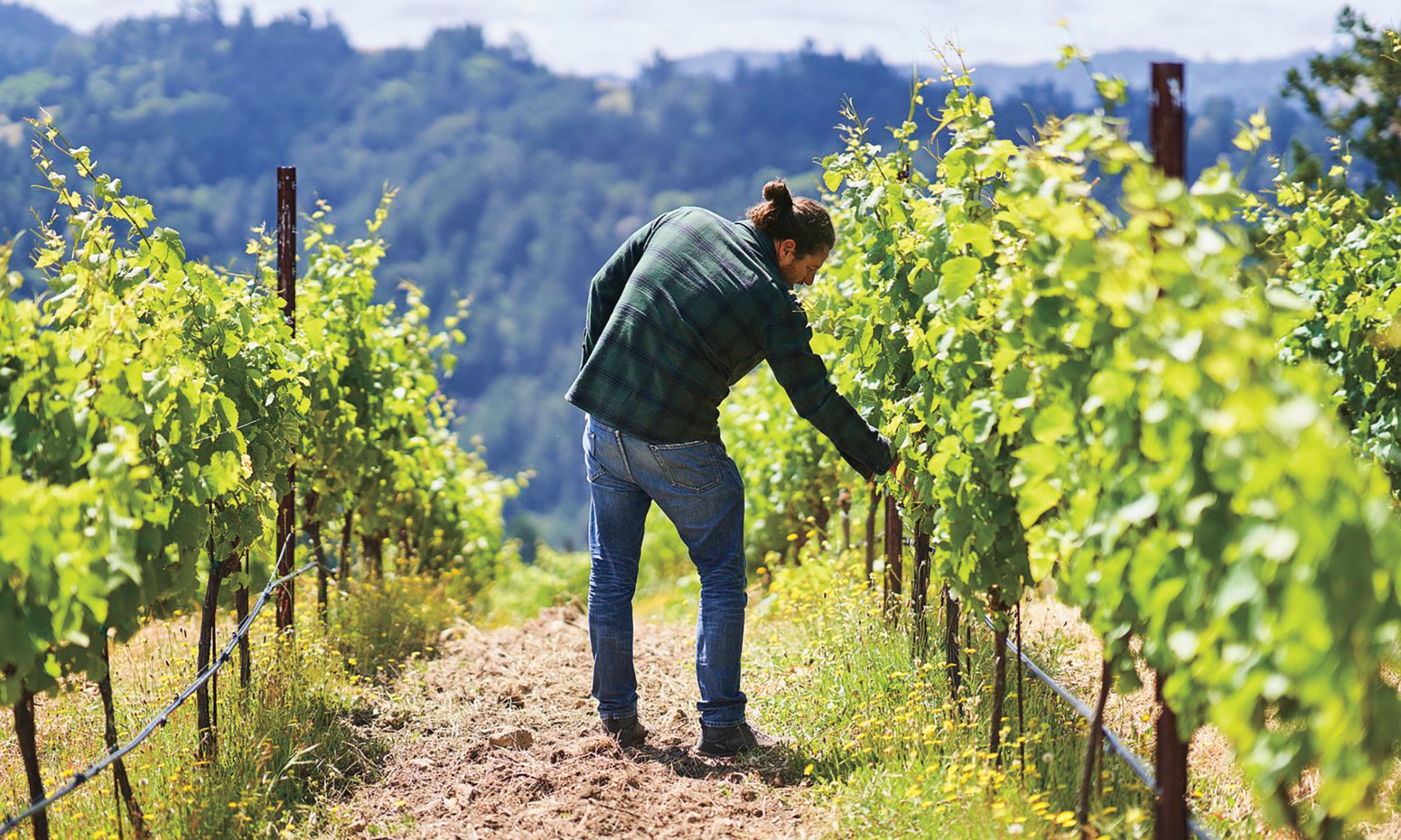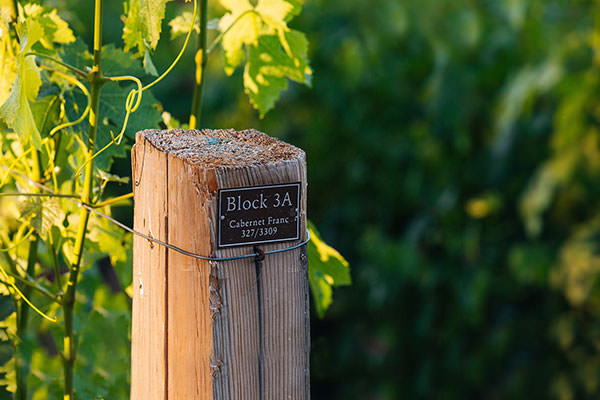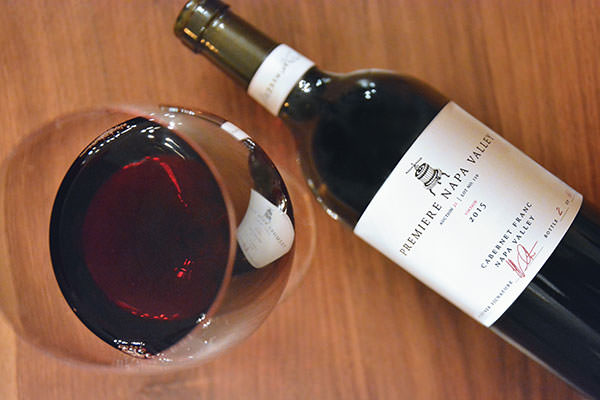Thousands of miles and a vast ocean separate Napa Valley and Italy, but the influence of the bel paese (“beautiful country”) reverberates throughout the valley.
There’s no denying the vital role Italian immigrants and their descendants have played in Napa Valley’s growth into an internationally renowned wine region. Italians first arrived in Napa Valley in the late 1800s, bringing with them viticultural and winemaking knowledge passed down through the generations.
Like every opera has its diva, almost every wine region has a superstar grape, and Cabernet Sauvignon is Napa Valley’s undisputed prima donna. But there’s room on Napa Valley’s stage for a strong supporting cast and, in the warmer months, white wines produced from Italian grape varieties harmonize with the mood and meals of the season.
Why is it possible for Italian varieties to thrive in Napa Valley? “Napa Valley’s Mediterranean climate is a natural fit. With mild, wet winters and warm, dry summers, our region mirrors some of Italy’s most iconic growing conditions,” explains Audrie Walsh, assistant winemaker at V. Sattui Winery. The Sattui family has roots in Italy and they honor that legacy by producing Pinot Grigio: “Its brightness and delicate complexity embody the balance we strive for—bringing a touch of Italy’s elegance to the vibrancy of Napa Valley.”
In Walsh’s estimation, Pinot Grigio from Napa Valley and Italy are both “beautifully delicate.” Yet she is not creating a carbon copy of Italian wine: “The specific vineyard site shapes the wine’s personality,” says Walsh, and Napa Valley leaves a unique imprint. Napa Pinot Grigio “tends to have a fresh, zesty structure, showcasing notes of pear, stone fruit and white flowers.” Meanwhile, its Italian counterpart “leans more into its mineral side, with a citrus zest edge that’s a hallmark of its cooler, rockier terroirs.”
“Our Italian heritage is our major inspiration,” says Bruce Devlin, winemaker and general manager for Ballentine Vineyards. “Libero Pocai, Frank Ballentine’s maternal great-grandfather, immigrated to California from Lucca, Italy.” In 2006, Ballentine planted Malvasia Bianca outside their tasting room. Malvasia Bianca has ancient roots and a long history; it was first mentioned in Italian literature in the 1600s and arrived in California with Italian immigrants.
“The Malvasia was, at first, an experiment to see how it would do and to add diversity to our vineyards. It does not ripen quickly, and with our warm days we aren’t rushed; rather, we are rewarded. Malvasia is a grape for the patient farmer/winemaker,” explains Devlin. Aromatic with stone fruit and floral flavors, Malvasia Bianca’s charms and versatility make it worth the wait for Devlin: “Malvasia [Bianca] has really good acidity, super low pH and it tastes great at low sugars, as well as high sugars, so it lends itself to a lot of different winemaking styles.” Ballentine currently produces two styles of Malvasia Bianca, a single-varietal still wine and a traditional-method bubbly.
“Joy in exploring and understanding their history” compelled Seth Cripe, founder and winemaker of Lola Wines, to work with Malvasia Bianca, as well as Fiano and Vermentino. “We enjoy lighter, lower-alcohol, more mineral-driven wines that are a complement to food and everyday life. These Italian varieties are very much that.”
A family tree with roots in Italy also inspired Robert Biale Vineyards to enhance its portfolio with grapes from the old country. “Taking a cue from the Biale family’s Italian roots, we embarked on tasting various white Italian varietal wines both from Italy and California to find a candidate to plant on the estate. In tasting after tasting, the Greco grape was noted as a favorite for both its richness and crispness,” explains winemaker David Natali.
In the same way that people evolve when they plant roots in a new land, Italian varieties express themselves differently when grown in Napa Valley. “The generosity of Napa Valley’s sun imparts a richer profile to the palate. Grown in the cooler Oak Knoll District, our Greco also shows a slightly brighter acid profile compared to wines from the grape’s warmer native region of Campania,” muses Natali.
In Italian culture, wine and food are meant to share space at the table. Lola Wines makes it easy to create a seamless taste of la dolce vita, that somewhat ineffable “sweet life” of simple pleasures. Vermentino’s lively acidity and crispness make it a winning match with virtually everything from the sea, including ceviche, oysters and fritto misto, a fried medley of seafood and vegetables. Cripe also recommends “thinly shaved fennel salad with a squeeze of lemon, a really good olive oil and shaved Parmesan, paired with any of our Italian whites.”
But Italian varietals aren’t limited to pairing with Italian foods: “Malvasia can mimic the characters of Riesling, so we believe it pairs well with the spicy foods we love from Thailand, India, Vietnam and the like,” notes Devlin. Natali believes you can’t go wrong matching their Greco with “seafood of all types,” especially “oysters and grilled fish with citrus and herbs.”
Keeping with the theme of pairing these white Italian varietals from Napa Valley with lighter foods, Walsh recommends “a fresh arugula and mustard greens salad with ripe peaches dressed with lemon vinaigrette” in addition to the V. Sattui recipe for Dungeness crab cakes.
A delicious bridge between two cultures, white wines made from Italian grape varieties are a refreshing reminder of Napa Valley’s play of tradition and innovation when approaching winemaking. Raise a glass and toast Italian style: Cin cin!




